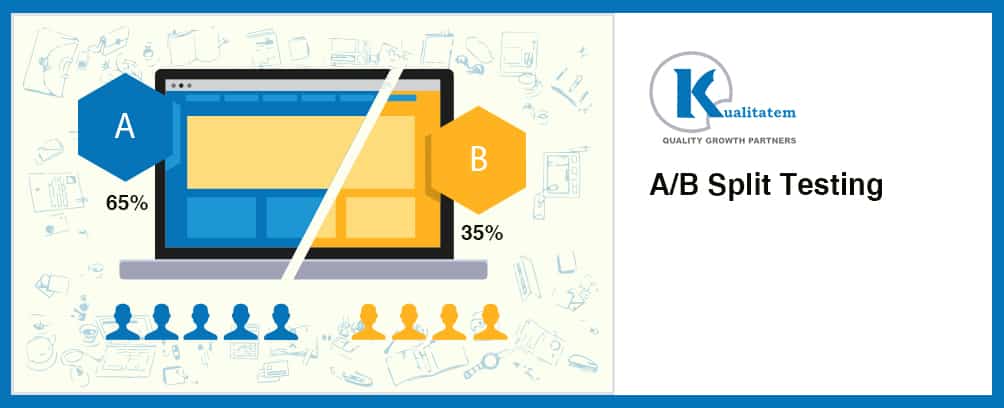A/B Split Testing

- January 27, 2016
- admin
AB testing is one form of testing that has not been touched upon by many people. Although other forms of testing especially usability testing are gaining popularity with testing companies, many are still unaware of the benefits gained by split testing. This article aims to give you an insight into the workings of A/B split testing. What it actually is? How it works? What benefits one can derive from it?
Let’s get started!!
What is A/B Split Testing?
A/B testing (also known as split testing or bucket testing) is a method of comparing two versions of an element (A and B) and then measuring it against each other to determine which one is more successful. Doesn’t it sound like the science experiments we did in school in which we were asked to compare and contrast the growth of two similar plants subject to different conditions?
A/B testing on the web page does exactly that. You have two designs of a website (A and B). Version A is commonly the existing design (the “control”) and version B is the “challenger.” You split traffic between these two to check the performance of both and select the one that performs better and brings in more conversion rates.
How AB Testing Works?
The first thing to do when planning an A/B test is to figure out if you want to do an on-site or an off-site test. For an on – site test, you are likely to look at sales-related pieces and for off-site tests you will probably test an add or an e-mail. Once you know which of these are building conversion rates it is easier to determine which experience had a positive, negative or no effect on visitor behavior.
What to A/B Test?
Once you have decided what conversion rate you want to improve, the next stage is to work out what to change on the page to try and increase conversions such as:
- Headings – size, color wording
- Images – placement, different images
- Content – amount, wording, font, size and placement of content on the page
- Product pricing and promotional offers
- Call to action buttons such as: buy now, sign-up and subscribe buttons can be of different sizes, colors, in different places on the page and have different wording
- Images on landing and product pages
- Social media buttons – placement, size and wording are all worth testing
- Logo and strapline
- Use of trade association and online trust seals such as VeriSign
- Advertisement
Tools Used For A/B Testing
A number of tools are available for A/B testing, with different focuses, price points and feature sets. Some of them are as follows:
- Google Website Optimizer
- A/Bingo and Vanity
- Visual Website Optimizer
- Unbounce and Performable
- Vertster, SiteSpect, Webtrends Optimize and Omniture’s Test&Target
Benefits of A/B Testing
A well planned A/B test can help you increase your revenue. It can also help you to have valuable insights into your customers’ thoughts. It lets you know of their preferences and keeps you from guessing. Accurate A/B tests can make a huge difference to your bottom line as well. By using these tests and gathering empirical data, you can easily figure out exactly which marketing strategies work best for your company and your product. A/B testing builds up concrete evidence of what actually works in marketing so regular testing can yield good conversion rates which in turn can do wonders for your brand/product.
So what are you waiting for? Pick up a framework and test it out today. 🙂











